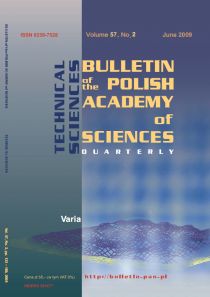POLISH ACADEMY of SCIENCES
TECHNICAL SCIENCES

| BULLETIN
of the
POLISH ACADEMY of SCIENCES TECHNICAL SCIENCES |
 |
|||
|---|---|---|---|---|
| Volume
60, Issue 2, June 2012
|
||||
| Issue Index | Authors Index | Scope Index | Web Info | |
|
|
||||
| Aims&Scope, Subscription | Editors | Authors' guide | to read PDF files | mirror: http://fluid.ippt.gov.pl/~bulletin/ |
| pp 253 - 257 |
|---|
|
Configurational forces for growth and shape regulations in morphogenesis |
|---|
| P. CIARLETTA, D. AMBROSI, and G.A. MAUGIN |
| Morphogenetic theories investigate the mechanisms of creation and regulation of definite biological forms in living organisms. The incredible diversity of shapes and sizes is generated through a barely unknown coordination of biochemical processes occurring at molecular levels. Such a crosstalk not only defines the rules of a robust scheme of matter differentiation, but it also has the capacity to adapt with respect to some variations of the environmental conditions. In this work, we propose a continuum model of growth and mass transport for biological materials during morphogenetic processes. Using the theory of configurational forces, we define the thermomechanical bases for understanding how both the mechanical and the biochemical states can orchestrate growth. The model is successfully applied to describe the morphogen-driven growth control in the imaginal wing disc of Drosophila melanogaster. |
| Key words: |
|
growth regulation, remodeling, mechanobiology, embryogenesis, configurational forces |
|
|
| Issue Index | Authors Index | Scope Index | Web Info |
|---|---|---|---|
|
|
|||
| Aims&Scope, Subscription | Editors | Authors' guide | to read PDF files |
| Copyright ® Bulletin of the Polish Academy of Sciences: Technical Sciences |
|---|